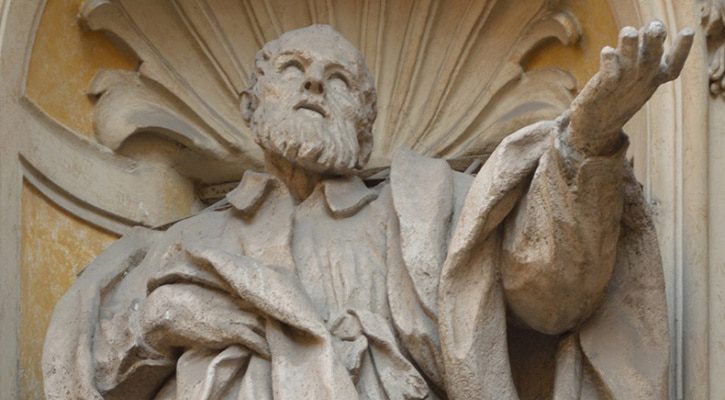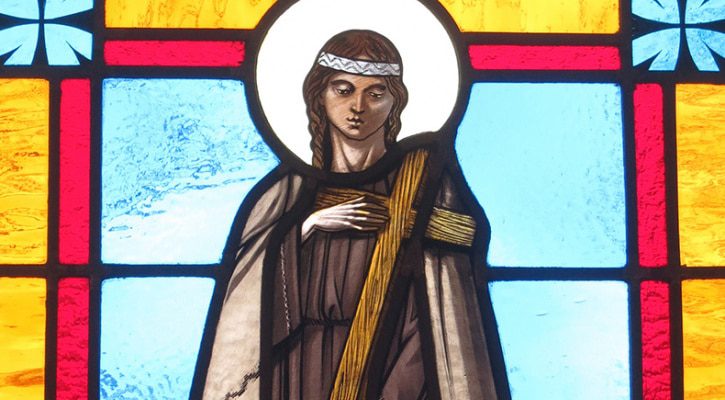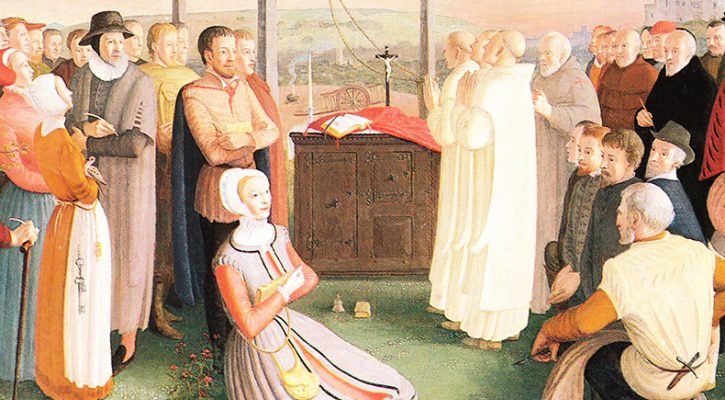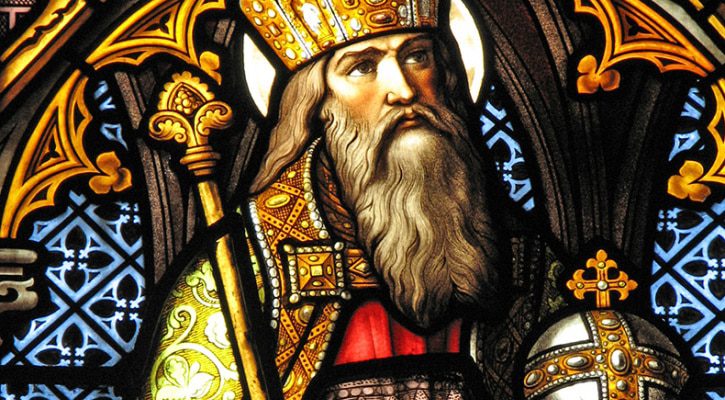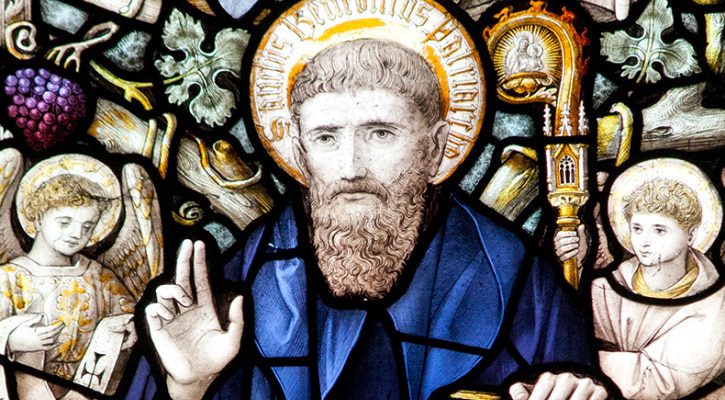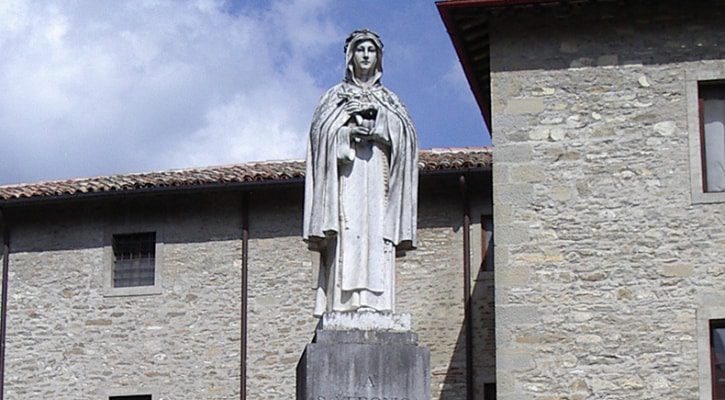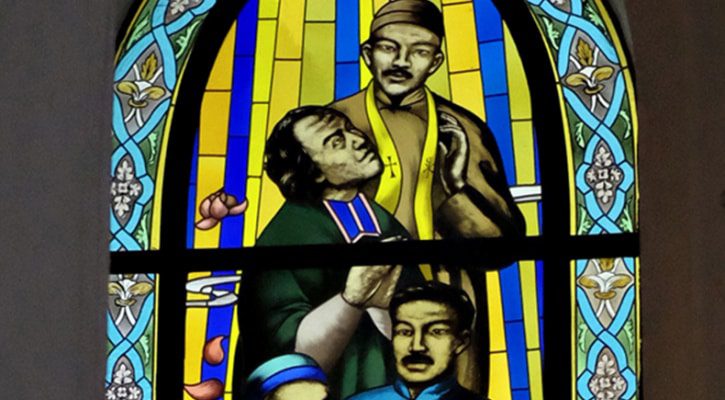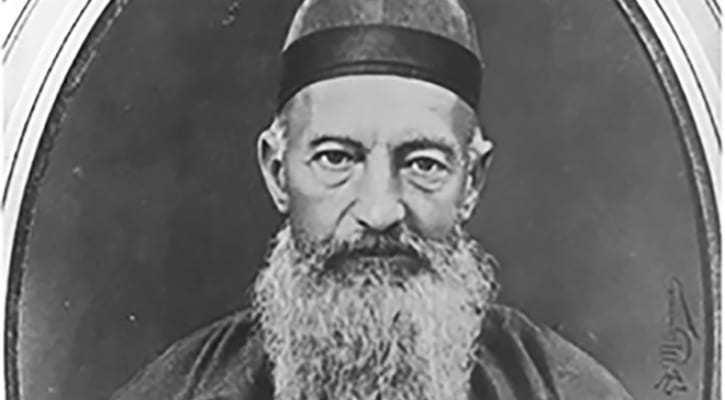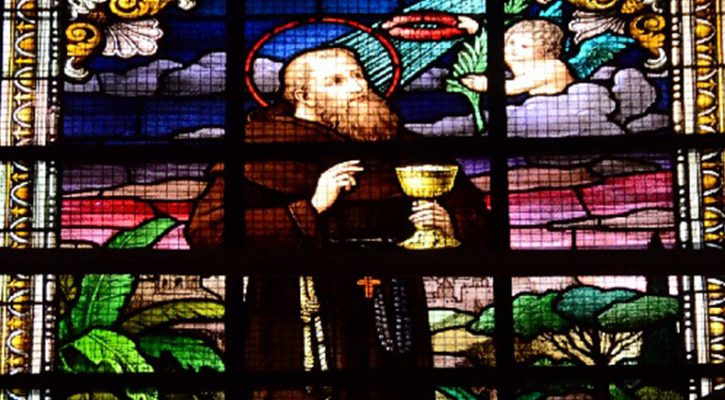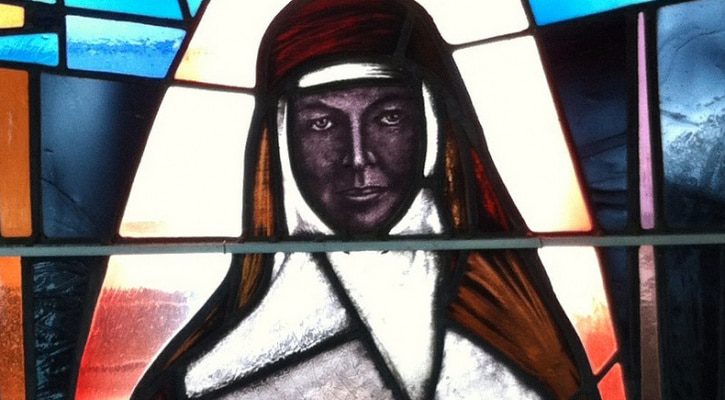
Image: Stained glass window at Saint Mary MacKillop shrine, Penola South Australia | photo by Pru.mitchell
Saint of the Day for July 19
(January 15, 1842 – August 8, 1909)
Saint Mary MacKillop’s Story
If Saint Mary MacKillop were alive today, she would be a household name. It’s not that she sought the limelight. On the contrary, she simply wanted to serve the poor wherever she found them in her native Australia. But along the way, she managed to arouse the ire of some rather powerful churchmen. One even excommunicated her for a time.
Born in Melbourne in 1842, to parents who had emigrated from Scotland, Mary grew up in a family that faced constant financial struggles. As a young woman she was drawn to religious life but could not find an existing order of Sisters that met her needs. In 1860, she met Father Julian Woods, who became her spiritual director. Together they founded a new community of women—the Sisters of St. Joseph of the Sacred Heart, also known as the Josephite Sisters. Its members were to staff schools especially for poor children, as well as orphanages, and do other works of charity.
As the congregation grew, so did Mary MacKillop’s problems. Her priest-friend proved unreliable in many ways and his responsibilities for direction of the Sisters were removed. Meanwhile, Mary had the support of some local bishops as she and her Sisters went about their work. But the bishop in South Australia, aging and relying on others for advice, briefly excommunicated Mary—charging her with disobedience—and dispensed 50 of her Sisters from their vows. In truth, the bishop’s quarrel was about power and who had authority over whom. He ultimately rescinded his order of excommunication.
Mary insisted that her congregation should be governed by an elected mother general answerable to Rome, not to the local bishop. There also were disputes about whether or not the congregation could own property. In the end, Rome proved to be Mary’s best source of support. After a long wait official approval of the congregation—and how it was to be governed—came from Pope Leo XIII.
Despite her struggles with Church authorities, Mary MacKillop and her Sisters were able to offer social services that few, if any, government agencies in Australia could. They served Protestants and Catholics alike. They worked among the aborigines. They taught in schools and orphanages and served unmarried mothers.
Money, actually the lack of it, was a constant worry. But the Sisters who begged from door to door, were bolstered by faith and by the conviction that their struggles were opportunities to grow closer to God.
By the time Mary was approaching the end of her life, the congregation was thriving. She died in 1909 at the age of 67. Pope John Paul II beatified her in 1995. In 2010, when Pope Benedict XVI canonized her, she became Australia’s first saint. Her liturgical feast is celebrated on August 8.
Reflection
The story of many foundresses of religious communities and the tales of the early days of those communities can make for fascinating reading. Those women were dedicated and tough and fought for those they served. Let’s thank the Lord for raising up such wonderful examples of faith.
Click here for more on Saint Mary MacKillop!
Posted by Franciscan Media.
Daily Reading
Thursday of the Thirty-fourth Week in Ordinary Time-Thanksgiving
Readings for the Thanksgiving Day Readings for the Thursday of the Thirty-fourth Week in Ordinary Time Thursday of the Thirty-fourth Week in Ordinary Time Thanksgiving Day – – – Lectionary…
Daily Meditation
Who Wins in the End?
Click here for daily readings Happy Thanksgiving! I would like to start by asking you to read today’s Gospel from Luke 21:20-28. If you are a regular Bible reader, this…





